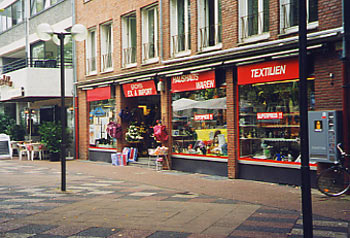While Scottish police launched into that task, early suspicion focused on one radically anti-American government: Iran. Officials thought it likely that the government of Ayatollah Khomeini had sponsored the bombing, and that Ahmed Jibril and his Syria-based terrorist organization, the Popular Front for the Liberation of Palestine - General Command (PFLP-GC), had carried it out. The evidence for that scenario did seem compelling, starting with a fresh motive, and a direct threat less than six months before the destruction of Pan Am 103. During a tense skirmish with Iranian gunboats in the Persian Gulf, the navy cruiser USS Vincennes shot down an Iranian passenger jet, which was carrying pilgrims to Mecca. 290 Iranians died. The US military insisted the shoot-down was a tragic mistake. But Iran's Islamic fundamentalist leaders promised to "retaliate to the maximum," and to "avenge the blood of our martyrs." And the Ayatollah's government meant it, according to former intelligence officials. Top figures in the Iranian government held a series of meetings in Beirut with leaders of Ahmed Jibril's terror group, the PFLP-GC, says Vincent Cannistraro, the CIA's chief of counter-terrorism at the time. "There was a conclusion made in the intelligence community that the Iranians were intending to sponsor the PFLP-GC's operations to attack American targets as part of a revenge operation," Cannistraro says. Following its meetings with Iranian officials, Cannistraro says, the PFLP-GC set up a bomb-making operation centered in the West German town of Neuss. But the West German government was watching. In October, 1988, two months before Pan Am 103 exploded, the German federal police launched what they called Operation Autumn Leaves: they raided more than a dozen homes and businesses, rounding up seventeen men, including several high-ranking associates of PFLP-GC leader Ahmed Jibril. They also found Semtex plastic explosive and a barometric detonator designed to go off at high altitude -- an airplane bomb. It was packed in a Toshiba cassette recorder called a Bombeat. The man who allegedly built the bomb had been surveilled carrying a brown Samsonite suitcase, according to West German police documents. Police jailed two leaders of the bomb-making group, but a judge ordered the rest released. Still, the West Germans boasted they'd successfully broken up a terrorist plot. Until two months later, when Pan Am 103 blew up over Lockerbie. Forensic investigators in Lockerbie determined that the bomb had been hidden in a cassette player and suitcase similar to those seized from the PFLP-GC in Germany: a Toshiba Bombeat and a brown Samsonite. The focus on the PFLP-GC intensified a couple of months later. The man who admitted building bombs for the group, Marwan Khreesat, turned up in Amman, Jordan. Khreesat told authorities that while in Germany he'd built five bombs, not just the one the police had seized. In the spring of 1989, West German police went back to Neuss to search for the four remaining bombs. At the apartment of the fruit merchant they found three. And the bombs were wired and ready: one blew up and killed a police technician. Still, one bomb went unaccounted for. Cannistraro, then head of the CIA's Lockerbie investigation, says authorities focused on the likelihood that Marwan Khreesat's fifth bomb had blown up the Pan Am 747 over Lockerbie. "The immediate feeling was: we've missed someone. That someone in that [PFLP-GC] cell had escaped with one of the explosive devices and succeeded in planting it on Pan Am 103." |
